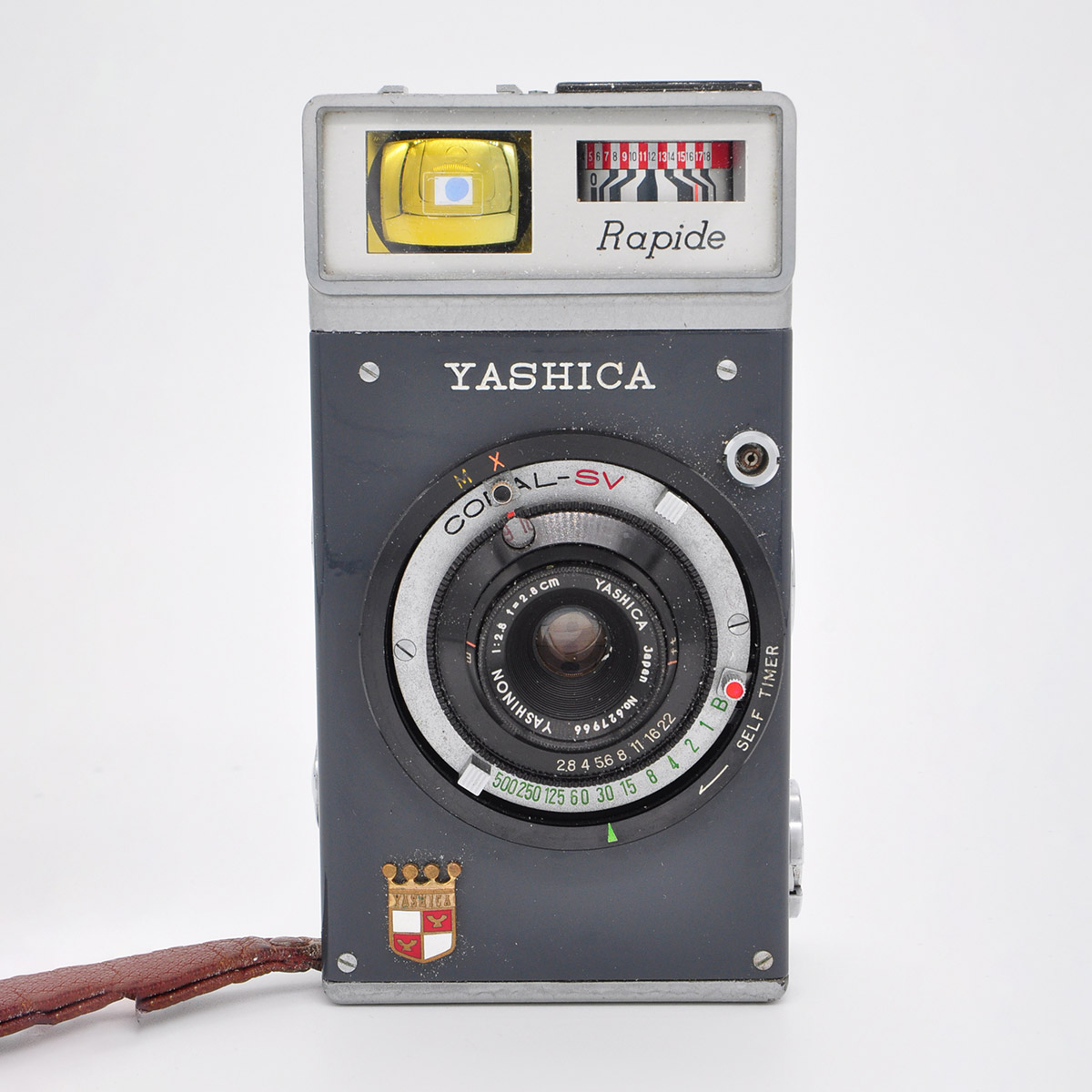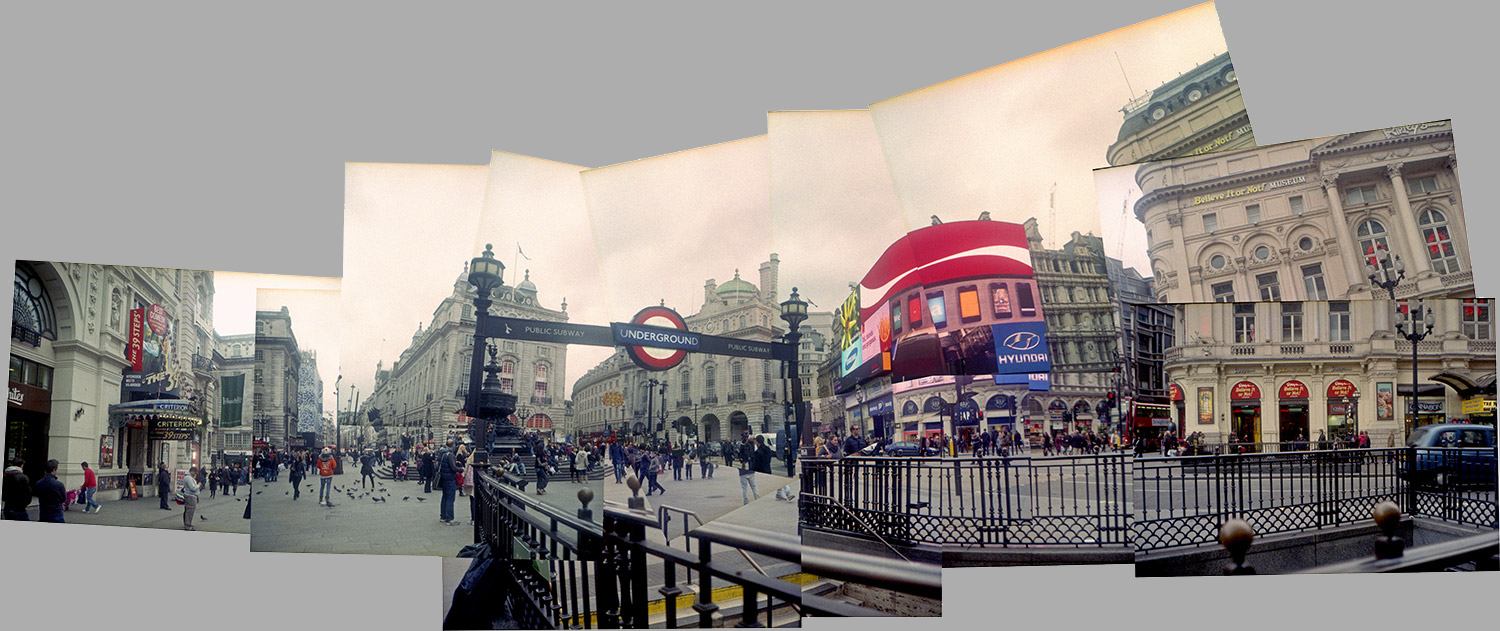Yashica Rapide
This month’s camera, a half-frame model from Yashica, doesn’t look like your average camera at all, in fact it could easily be mistaken for a cine camera. As the name suggests, half frame cameras allow you to get twice as many photos out of a roll of film, though of course this is at the expense of negative size and thus overall image quality. For the keen family photographer of the 1960s and 70s, for whom big enlargements were probably not a concern, they provided an attractive way to make the most economical use of film, which at that time was relatively expensive.
All the big name manufactures pitched in, and a variety of cameras were on offer, ranging from basic point and shoots, right up to the legendary Olympus Pen F series of single lens reflexes, with its accompanying system of lenses and accessories.
While some half frame cameras are quite small, many are as big and heavy as their full frame counterparts, confirming that film economy rather than pocket-ability was the driving force behind the format. The Yashica Rapide is a heavy metal brick of a camera, but not without its charms. The Rapide of the name refers to the rapid wind on and shutter cocking which is achieved by tugging sharply on a leather tab, with practice you can take an exposure every second or so should the need arise. I’d not come across this mechanism for film advance before, but interestingly the same system is used in the current Lomography Supersampler camera, admittedly this plastic novelty camera has a much flimsier feel to it, and a gentle controlled pull rather than a tug is needed to avoid breaking it!
Two things struck me as odd when I first looked the camera in the eye, first the impressive looking crest on the bottom left, which looks distinctly European despite the Japanese origin, and then the exposure meter scale and needle. Why was this placed on the front of the camera? Was the subject supposed to squint at the numbers and then relay them back to the photographer? This seemed unlikely, but once you handle the camera it feels quite natural to point the top-facing Selenium cell at your subject and read numbers off the scale, in fact come to think of it, maybe you should think of it as an exposure meter with a built in camera rather than the other way round.
Even though it’s more than half a century old, the fully mechanical shutter works perfectly at all speeds, which range from 1 sec to 1/500th. Together with the 28mm f2.8 Yashinon lens, this allows the user to take well exposed photos in a whole range of lighting conditions. There is no built in range-finder, so you have to rely on your judgement or use an accessory range-finder, the scale focussing extends down to 3 feet, with markings in the viewfinder for parallax correction at close range. Originally there would have been a lens cover in the form of a shallow metal cup which screwed on to protect the lens and the various setting levers from damage, but unfortunately mine is missing.
The economical benefits of half-frame notwithstanding, it can be a daunting prospect to have 72 exposures to play with, but I decided to use this to my advantage. I quite like to make David Hockney style joiner photographs, where several pictures are taken with the camera pointing in different directions, and the resulting prints assembled into a collage, the overlaps and incongruities providing added visual interest. Half-frame cameras are ideal for this technique as you don’t have to worry about running out of film. The Rapide lived up to its name allowing me to get these fourteen shots done in under a minute, having just emerged from the tube at Piccadilly Circus. Of course it took considerably longer than a minute to put them all together in Photoshop Elements, and reminded me that just because you start off with an “analogue” camera, doesn’t mean you can entirely escape the digital drudgery.


